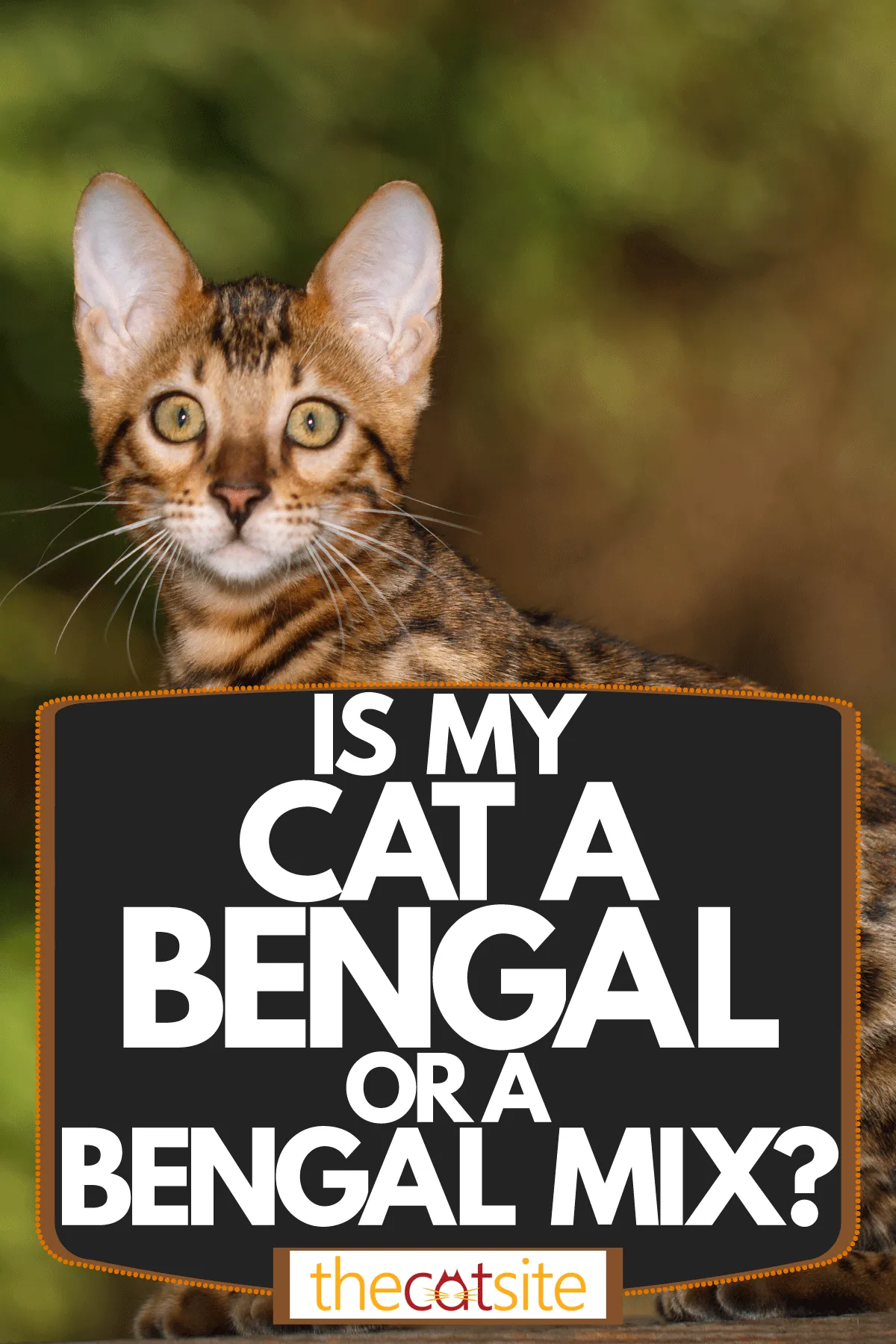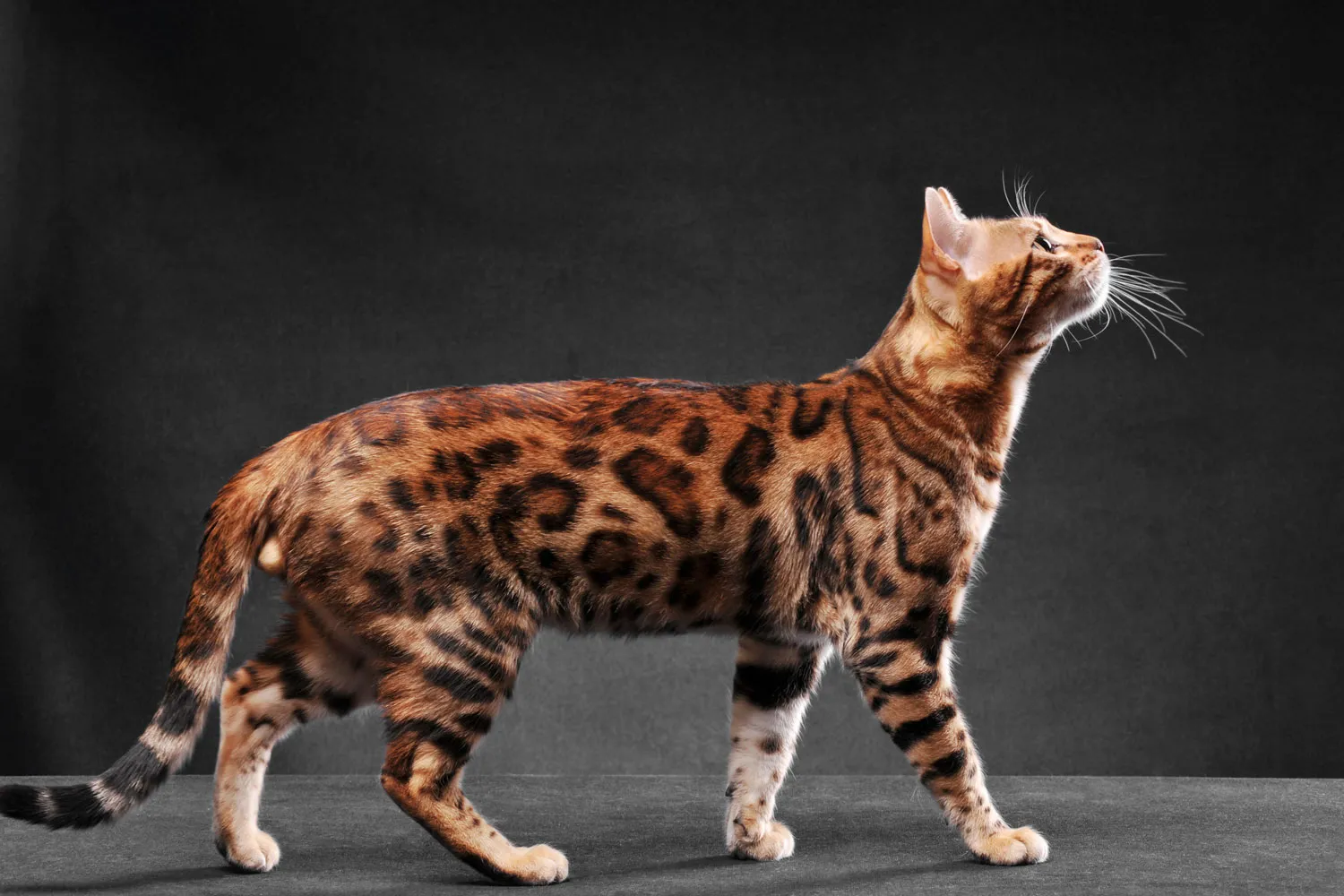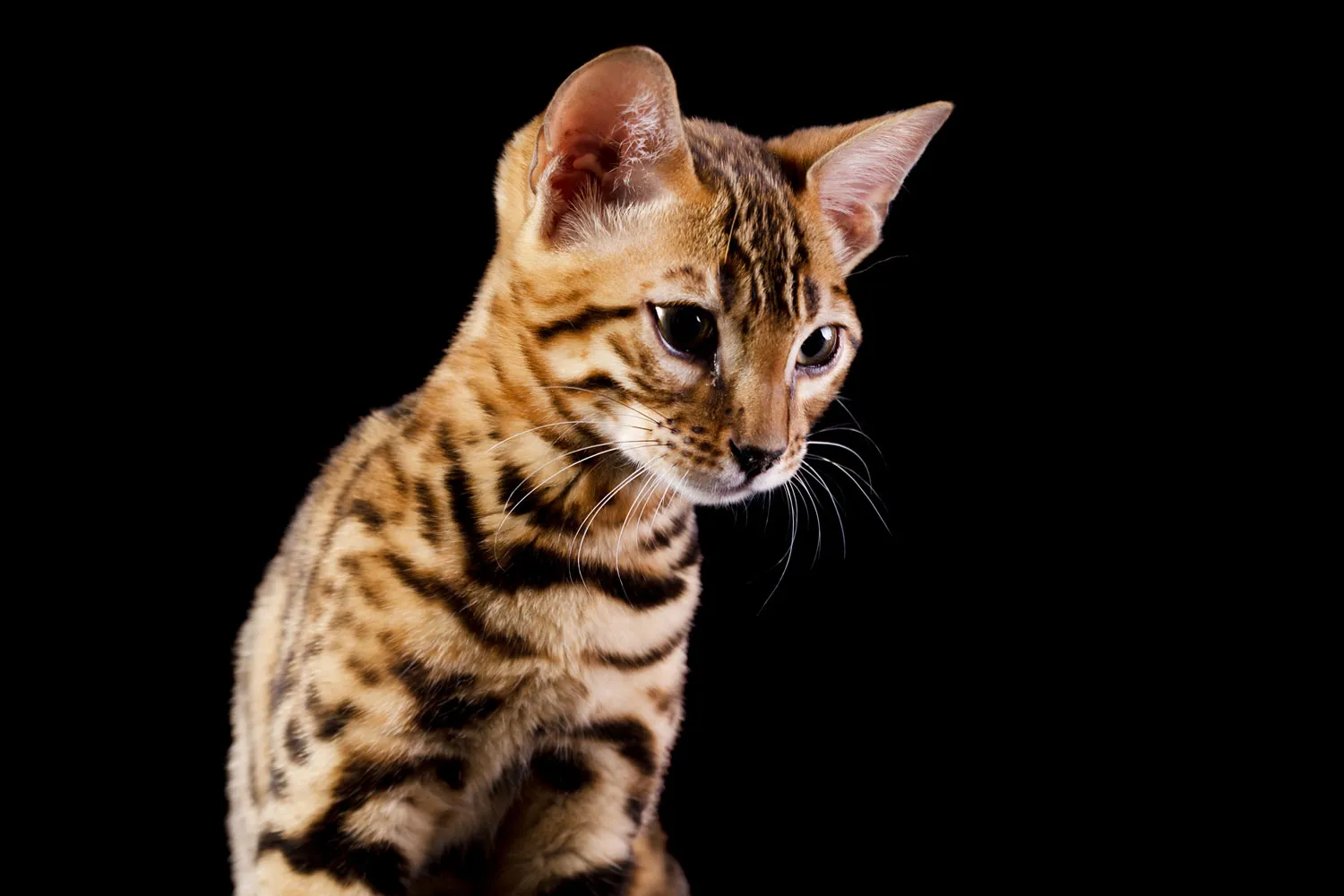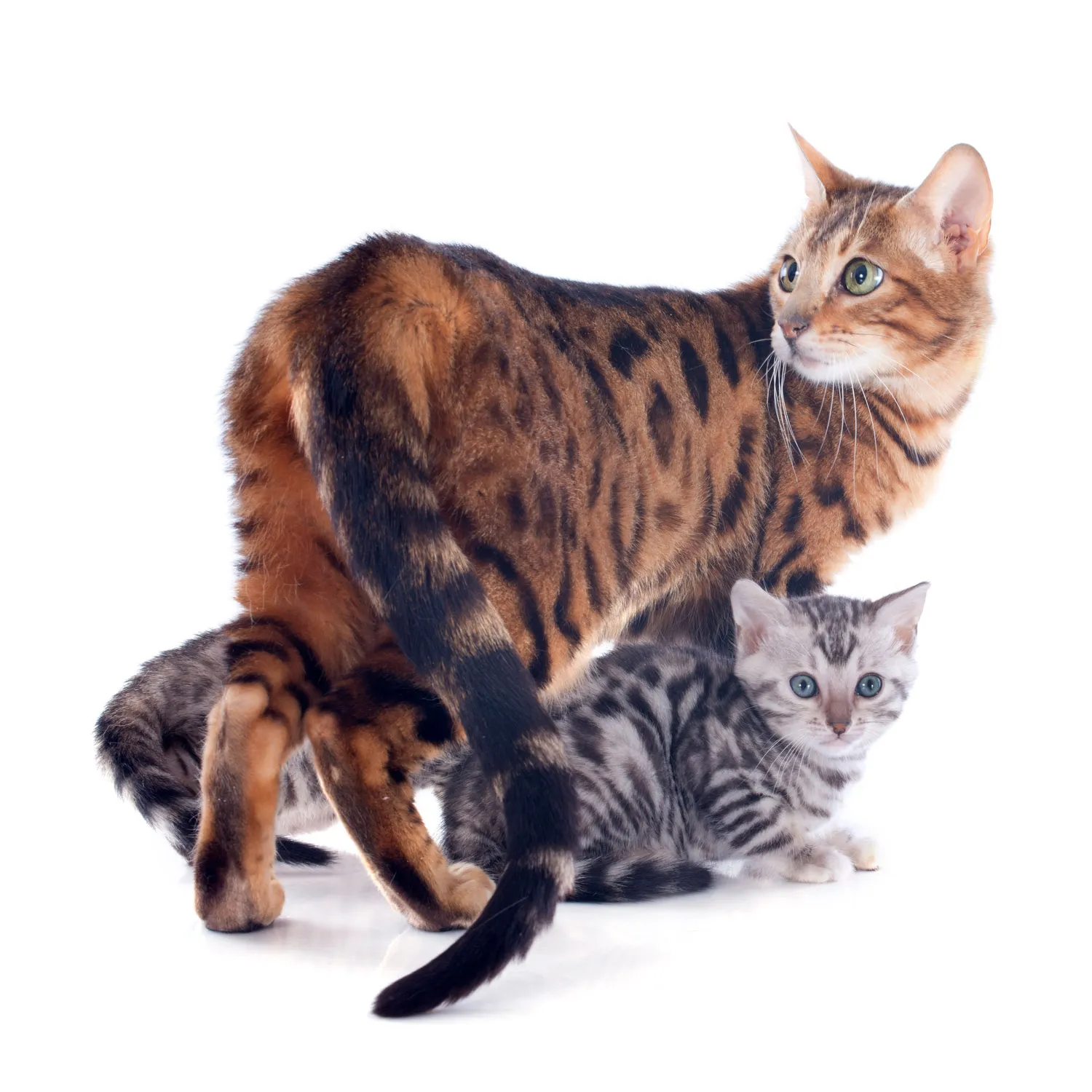Have you ever gazed into your cat’s wild-like eyes and wondered if there’s a touch of the jungle in its lineage? The majestic Bengal cat, renowned for its striking appearance and captivating personality, often sparks such curiosity among cat enthusiasts and new owners alike. With patterns that mimic miniature leopards and a coat that shimmers like brushed gold, distinguishing a Purebred Bengal Cat from other domestic breeds can be an intriguing quest. This guide will take you through the fascinating journey of identifying a purebred Bengal cat, exploring its unique history, distinctive physical traits, and the vibrant temperament that makes it a truly extraordinary companion. Get ready to uncover the secrets behind this magnificent breed and understand what truly sets a purebred Bengal apart.
The Allure of the Purebred Bengal Cat: Origins and Distinctive Looks
The story of the purebred Bengal cat is a tale of deliberate breeding, aiming to merge the exotic beauty of the wild Asian Leopard Cat (ALC) with the gentle nature of a domestic feline. While initial breeding attempts date back to the late 19th century, it wasn’t until the meticulous efforts of breeders in the 2000s that the Bengal’s appeal truly soared. This unique lineage grants the Bengal a captivating wild aesthetic, making it one of the most sought-after breeds globally. However, the wild appearance can sometimes be deceptive; to definitively establish a purebred Bengal cat’s status, more than just looks are required.
The most crucial factor in authenticating a purebred Bengal cat is proper documentation from a registered breeder or, in some cases, a genetic test. Without official pedigree papers, a cat that strongly resembles a Bengal is likely a domestic shorthair tabby, regardless of its striking patterns. The distinct markings on a cat’s coat are the most obvious visual indicators that they “look” like a Bengal. Purebred Bengal cats possess a shimmering coat and unique tabby patterns that are often two-toned and incredibly vivid. These patterns primarily fall into two categories: Spotted and Marbled.
A spotted coat, highly reminiscent of its wild ancestors, features large, two-toned rosette markings. These rosettes can vary in shape, often appearing as paw-prints, donuts, or arrowheads, creating a mini-leopard effect. Notably, Bengals are the only domestic cat breed known to exhibit these specific rosette markings. In contrast, a marbled coat showcases a horizontally flowing, asymmetrical pattern, typically composed of swirls in two or more colors. These intricate patterns contribute to the breed’s exotic charm and are a hallmark of the purebred Bengal cat.
 A cute Bengal cat sitting outside the fence of his owners house, Is My Cat A Bengal Or A Bengal Mix?
A cute Bengal cat sitting outside the fence of his owners house, Is My Cat A Bengal Or A Bengal Mix?
Bengal Coat Colors and Patterns: Beyond the Leopard Spot
The vision of breeder Jean Mill was instrumental in shaping the modern purebred Bengal cat. She aimed to create a domestic cat with the breathtaking coat of a wild feline, and her work led to the first known deliberate cross between a domestic cat and an Asian Leopard Cat. Today, most purebred Bengal cats are typically four or more generations removed from their wild ancestors, yet they continue to benefit from these beautiful genetic traits, which manifest in their diverse range of patterns and colors.
While the iconic gold-spotted leopard-like appearance is the most widely recognized and popular coat among purebred Bengal cats, it is by no means the only one. Within the unique patterns of their fur, several allowed colors exist, including fascinating “snow patterns.” These rare Bengals combine a form of colorpoint look with the tabby appearance, often boasting captivating blue eyes that add to their allure. According to the Cat Fanciers Association (CFA), only two actual coat patterns are officially recognized for Bengals, each with its own specific characteristics.
Bengal Spotted Coat with Rosettes
The spotted coat is the most common and arguably the most identifiable pattern found in purebred Bengal cats. This pattern features small to large spots distributed across the entire body, frequently including the distinctive two-toned rosette markings. These rosettes, which became a staple look for the breed in the early 2000s, can take on various captivating shapes. Examples include the “paw-print” rosette, which resembles a paw print; the “donut” rosette, characterized by a darker outline surrounding a lighter center; and the “arrow-head” rosette, shaped like an arrowhead. These unique rosettes are exclusive to Bengal cats, meaning that if you encounter a tabby cat with these specific markings, there’s a high probability you are indeed looking at a purebred Bengal cat or at least a Bengal mix.
 A big Bengal cat hunting outdoors for rats or others
A big Bengal cat hunting outdoors for rats or others
Bengal Marbled Coat
The marbled coat pattern in purebred Bengal cats is another stunning display of their wild heritage, offering a swirling, asymmetrical design that is equally mesmerizing. This pattern is categorized into four main types: reduced horizontal flow, horizontal flow, chaos pattern, and street marbled. These variations originated from the swirling, blotched tabby stripes found in some domestic cats, meticulously refined through breeding. The International Cat Association (TICA) officially granted marbled Bengals championship status in 1993, recognizing their distinct beauty and adherence to breed standards. A well-defined marbled coat on a purebred Bengal cat will exhibit a clear, dynamic flow of color, often with strong contrast between the markings and the background.
 A mink bengal cat sharpening his claws onto a branch of a tree
A mink bengal cat sharpening his claws onto a branch of a tree
Distinguishing a Purebred Bengal from a Regular Tabby
It’s a common misconception that all cats with stripes or spots are Bengals. In fact, all Bengal cats are a type of tabby cat, but not all tabby cats are Bengals. The term “tabby” broadly refers to a coat pattern characterized by two types of hair, one of which is agouti hair featuring bands of color. This combination creates the classic tabby pattern, which can manifest as striped, spotted, or marbled designs. Even patterns where tabby is mixed with white or overlaps with calico or tortoiseshell exist. One immediate telltale sign of a tabby cat, including all Bengals, is the distinct “M” marking on their forehead. However, to the untrained eye, differentiating a purebred Bengal cat from a non-Bengal tabby can be challenging.
Bengal Cats Have a Unique Fur Texture
One of the most immediate and distinguishing features of a purebred Bengal cat, often perceptible even in high-quality photographs, is their fur texture. Once you have the opportunity to feel a Bengal’s coat, the difference becomes strikingly evident. The Cat Fanciers Association eloquently describes the Bengal coat as “pelt-like plush,” unlike any other domestic cat. This luxurious fur can range from the incredible softness of rabbit fur to the dense resilience of a hand-tied rug, offering an unexpected tactile experience. While most Bengals are shorthaired, it’s interesting to note that TICA also recognizes a longhair Bengal breed, showcasing the genetic diversity within the lineage.
 A huge Bengal cat photographed on a dark gray background
A huge Bengal cat photographed on a dark gray background
Coat Patterns: Bengal vs. Regular Tabby
When it comes to coat patterns, the presence of rosettes is a strong indicator of a purebred Bengal cat or at least a Bengal mix. These distinctive two-toned markings are unique to the breed. With marbled patterns, however, the distinction can be trickier. Non-Bengal tabbies can also exhibit swirling marble patterns that might resemble those of a Bengal. Nevertheless, show-quality purebred Bengals with marbled coats typically display an extremely striking appearance. The breed standard emphasizes extreme contrast between the markings and the background, along with a random pattern that avoids circular or “bullseye” designs, which are common in marbled non-Bengal tabbies.
Coat Colors: Bengal vs. Regular Tabby
While there is some overlap in coat colors between Bengals and regular tabbies, certain colorations are distinctly Bengal. The “snow Bengals,” for instance, are a prime example. These unique purebred Bengal cats, with their specialized blue eyes and specific colorpoint tabby patterns, are exceptionally different from any non-Bengal tabby cat and are easily recognizable as a testament to the breed’s unique genetics.
Other Physical Features
Beyond their captivating coats, purebred Bengal cats often possess a generally muscular build and broad faces that clearly hint at their exotic origins. An experienced breeder or cat fancier can typically identify a Bengal based on a comprehensive list of physical traits, which extend beyond just coat color and pattern. For those less familiar with the breed, however, the unique coat color, pattern, and texture usually serve as the most accessible and recognizable distinguishing features. These combined physical characteristics create the overall impression of a wild, athletic, and magnificent purebred feline.
Verifying Purebred Bengal Cat Status: The Importance of Documentation
While a cat may possess all the visual hallmarks of a Bengal, the definitive way to confirm that your feline companion is a purebred Bengal cat is through qualified paperwork. In essence, a purebred Bengal must be pedigreed. For instance, a Bengal registered with TICA will come with comprehensive documentation tracing its lineage back to the original Asian Leopard Cat mating. This official documentation is the sole irrefutable proof of a Bengal’s purebred status.
Purchasing a cat advertised as a purebred Bengal without the accompanying documentation can lead to a significant predicament. Such cats may not be purebred at all, or they might have been bred by individuals who disregard ethical breeding practices. If you are intent on acquiring a purebred Bengal cat, it is paramount to engage with a registered and ethical breeder. While papers are a vital component, they are just one aspect to consider. It is always advisable to avoid backyard breeders and kitten mills, as they often compromise the health and well-being of their animals. A reputable breeder will provide clear documentation, health guarantees, and be transparent about their breeding practices, ensuring you bring home a healthy and genuinely purebred Bengal cat.
 A cute Bengal kitten on a white background
A cute Bengal kitten on a white background
Purebred Bengal Cat Characteristics: Size, Lifespan, and Temperament
Purebred Bengal cats are not only admired for their stunning appearance but also for their distinct physical attributes and engaging personalities. Understanding these characteristics is essential for any potential or current owner.
Size
Bengals typically range from medium to large in size, often surpassing the average domestic house cat. This larger stature is attributed to their naturally muscular build and their inherent motivation for physical activity and exercise. They reach their full size by approximately two years of age. Adult female purebred Bengal cats generally weigh between 6 and 12 pounds, while males can range from 9 to 15 pounds, showcasing their robust and athletic physiques.
Lifespan
The lifespan of a purebred Bengal cat is significantly influenced by various factors, including their lifestyle, overall health, and nutritional intake. With optimal care, a Bengal can live anywhere from 12 to 20 years. However, it’s crucial to note that Bengals without proper registration papers may be more susceptible to undisclosed health or genetic concerns, which could potentially impact their longevity. Responsible breeding practices and regular veterinary care are key to ensuring a long and healthy life for these beautiful felines.
Temperament
Beyond their one-of-a-kind coats, the temperament of purebred Bengal cats is highly sought after. This breed is renowned for being incredibly attentive and playful, with many owners describing their behavior as “dog-like.” If you own a Bengal, you’ve likely noticed their significant need for playtime, which often rivals their desire for cuddles. These cats are known for their affectionate nature combined with exceptionally high energy levels. It is essential to provide them with ample time and space to run, climb, explore, and play to accommodate their active lifestyle. It’s quite common to see a purebred Bengal cat trained to perform simple tricks or even walk on a harness, reflecting their intelligence and eagerness to engage. Their inquisitive and adventurous spirit makes them dynamic companions who thrive on interaction and mental stimulation.
 A Bengal cat playing and running around the living room
A Bengal cat playing and running around the living room
Why Two Purebred Bengal Cats Might Be Better
Given their exceptionally high energy levels and profound need for mental and physical engagement, purebred Bengal cats often thrive when they have a companion. Introducing a playmate into the home allows them to expend a significant amount of their boundless energy in a healthy and interactive way. Many Bengal owners find that having two purebred Bengal cats, or at least two active felines, can lead to a more harmonious household. Cats are inherently social creatures, and Bengals, in particular, often form strong bonds with their companions.
Bonded cats enjoy a multitude of benefits that contribute to their overall well-being. They provide mutual company, which can alleviate boredom and reduce potential behavioral issues that stem from a lack of stimulation. Companions also offer opportunities for learning from one another and can help keep each other physically healthy through active play. For owners, having two Bengals can lead to easier care, as the cats entertain each other, fostering a happier and more engaged life for them. Cats with companions tend to adapt more quickly to new environments and enjoy more consistent playtime. Thus, for purebred Bengal cats, two are often better than one, ensuring their social and energetic needs are met effectively.
 Two Bengal cat lying and standing on the sofa
Two Bengal cat lying and standing on the sofa
Acquiring Your Purebred Bengal Cat: Responsible Sourcing
When considering bringing a purebred Bengal cat into your home, responsible sourcing is paramount. The most reliable way to acquire a genuine purebred is through a registered Bengal breeder. Look for breeders who have signed a code of ethics and are preferably associated with reputable organizations like TICA (The International Cat Association) or The Cat Fanciers Association (CFA). Such associations provide a framework for ethical breeding and can often guarantee the purebred status of the cat you are purchasing.
If your intention is to purchase a purebred Bengal cat for breeding purposes or for showing in competitions, obtaining the legal documentation from your breeder is not just recommended, but vital. These papers confirm the cat’s lineage and adherence to breed standards, which are essential for participation in recognized events. Furthermore, finding a breeder who can also serve as a mentor is incredibly beneficial, as showing or breeding cats is a complex endeavor that requires significant knowledge and support.
For those who are not strictly set on a purebred and are open to a Bengal mix, checking out dedicated Bengal cat rescues can be a wonderful option. Cats found in rescues are surrendered for various reasons, and adopting one offers the chance to save a life while gaining a loving companion. Regardless of whether you choose a purebred from a breeder or a mix from a rescue, diligent research and a commitment to responsible pet ownership are key to a fulfilling relationship with your Bengal cat.
 A big mother cat Bengal cat with her kittens underneath on a white background
A big mother cat Bengal cat with her kittens underneath on a white background
Final Thoughts
The journey of identifying a purebred Bengal cat is a captivating one, filled with discoveries about their unique origins, breathtaking patterns, and vibrant personalities. From the distinctive rosette markings and pelt-like fur to their playful, dog-like temperaments, Bengals are truly exceptional felines. While their appearance can be strikingly wild, the ultimate confirmation of a purebred Bengal cat lies in official pedigree documentation from ethical, registered breeders.
Whether your beloved companion is a pedigreed purebred Bengal, a charming Bengal mix, or a wonderful domestic tabby, the joy they bring to our lives is immeasurable. Embracing their unique traits, providing appropriate care, and celebrating their individuality will ensure a happy and healthy life for these gorgeous cats. If you remain curious about your cat’s specific characteristics or wish to discuss their resemblance to the Bengal breed, consider joining online forums or consulting with experienced cat fanciers. Your feline friend, regardless of its lineage, deserves all the love and attention you can provide.
